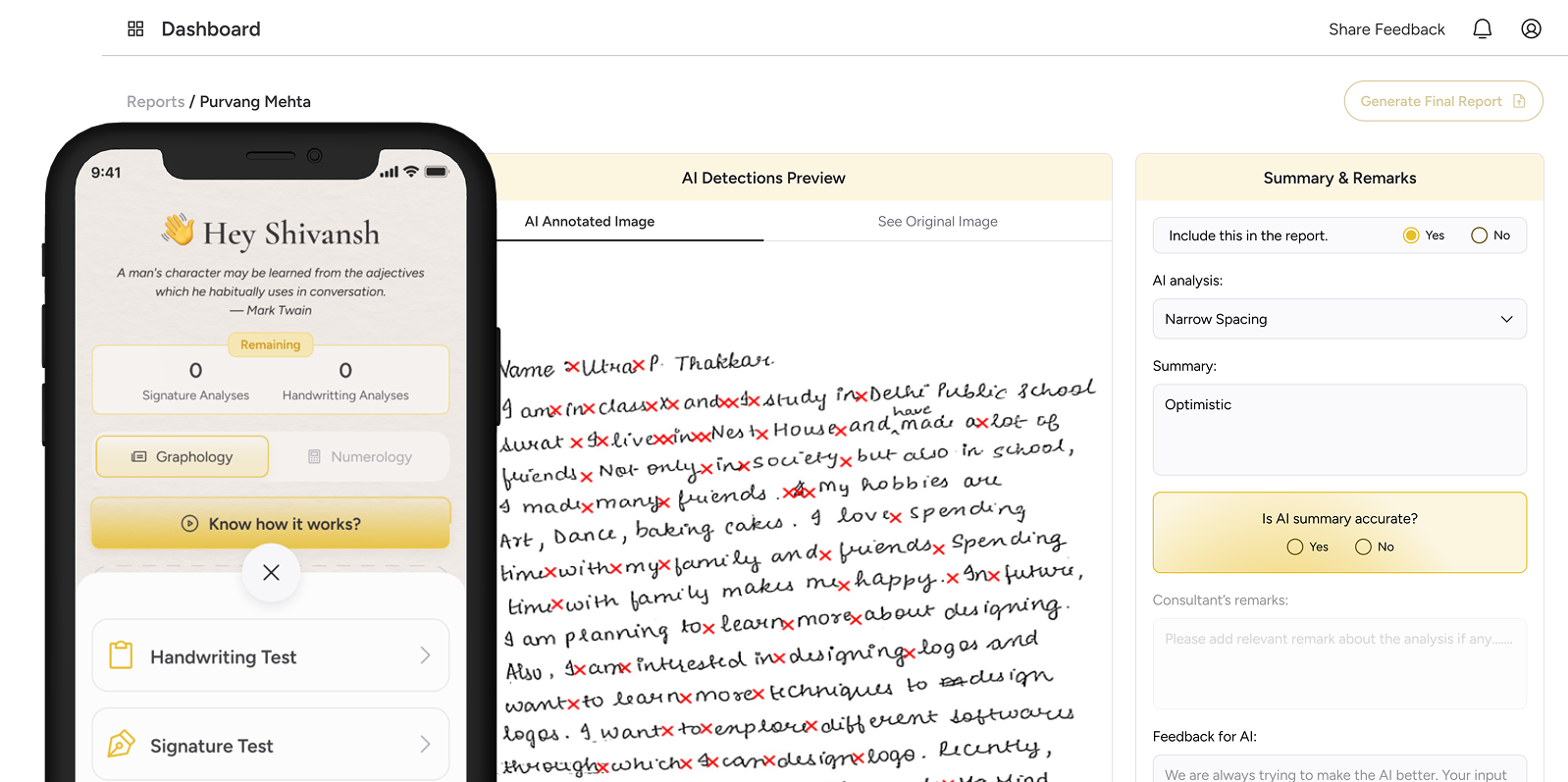
There is a certain poetic irony in using artificial intelligence to analyze something as deeply human as handwriting. Yet, this irony is exactly where the magic happens. It is in this paradox that innovation finds meaning, and it is here that Soulera thrives.
At Soulera, we do not see tradition and technology as opposing forces. Instead, we see them as partners—two languages working together to tell one story. The stroke of a pen may seem old-fashioned in a world of machine learning and neural networks. But what if that stroke, analyzed with the right tools, could reveal more than words? What if handwriting, that most intimate form of expression, could be decoded to unlock patterns of emotion, growth, and behavior?
This is not the future. This is the present. And it is profoundly human.
Handwriting is often treated as a relic of the past, a skill once taught in schools but now replaced by keyboards and touchscreens. But handwriting has never been just about words. It is about presence. It is about motion, rhythm, personality. It is about the mind and body coming together to translate emotion into marks on a page.
Each loop, slant, and spacing decision tells a subtle story. These are the unconscious choices of a person expressing something far deeper than language alone can reveal. They are imprints of identity.
Now, with the help of AI, we can begin to see those stories more clearly.
Artificial intelligence offers something that tradition cannot: scale and pattern recognition. With machine learning, we can detect micro-patterns in handwriting that the human eye may miss. These patterns are not just quirks or habits. They are clues. Clues to mood, mental state, decision-making style, and even long-term behavioral shifts.
By studying these nuances, we do not reduce the writer to a data point. We elevate them. We build a multidimensional profile that respects both the science of behavior and the art of individuality.
Soulera uses AI to analyze handwriting not as a cold forensic tool, but as a method of insight. The goal is not to judge or predict, but to understand. When AI looks at handwriting, it sees more than a letter formation. It sees emotional arcs. It sees transitions. It sees who someone was, who they are, and perhaps even who they are becoming.

Imagine this: a professional submits a handwriting sample each quarter. Over the course of a year, subtle changes begin to appear. Perhaps the size of the letters has grown. The pressure has softened. The slant has shifted from rigidly upright to gently curved. On their own, these details may seem small. But together, they paint a picture.
That professional may be experiencing increased confidence. Or perhaps a shift toward introspection. These changes can be mapped and interpreted over time, providing insights that no résumé or performance review could ever uncover.
This is the heart of the paradox: something as analog as ink on paper can become a digital story of growth, told in collaboration with algorithms. It is human experience, decoded.
This synthesis of tradition and technology opens the door to a range of powerful applications:
Personal Growth Timelines
Handwriting, when tracked over time, becomes a journal of the subconscious. By observing changes in style, form, and fluidity, individuals can witness their own emotional evolution. It is like holding up a mirror to the mind—not just reflecting what was said, but how it was felt.
Emotional Fluctuation Mapping
By correlating handwriting patterns with emotional indicators such as pressure, slant, and spacing, we can begin to map emotional cycles. This can be valuable for therapists, coaches, and individuals managing mental health or high-stress careers. It creates a quiet, non-invasive record of the emotional landscape.
Career and Leadership Profiling
Leadership is more than a job title. It is a reflection of how one thinks, responds, and adapts. Handwriting analysis powered by AI can reveal tendencies such as decisiveness, adaptability, and empathy. For recruiters, managers, or leadership development programs, this becomes a tool not for exclusion, but for discovery. It supports people in understanding their natural inclinations and potential areas for growth.
With great insight comes great responsibility. Soulera operates with a deep respect for privacy and consent. The data collected is not used to judge or rank individuals. It is used to support them. Every analysis is rooted in curiosity, not criticism.
AI is a tool, not a replacement for human understanding. It augments insight. It deepens conversations. It invites people to ask better questions about themselves and others.
There is no algorithm for the soul. But there are pathways. And sometimes, those pathways begin with a pen and a blank page.

In a world that moves fast, handwriting encourages us to slow down. It reminds us that expression can le, personal, and meaningful. It is not about resisting change or longing for the past. It is about bringing the richness of tradition into the possibilities of the present.
We do not have to choose between analog and digital. We can embrace both. The handwritten note and the neural net. The ink line and the data line. The gesture and the graph.
That is the paradox we embrace.
At the intersection of heritage and innovation lies a new kind of wisdom. One that listens to the pen and learns from the code. One that honors the past while embracing the future.
Handwriting and AI may seem like strange companions. But together, they tell a story neither could tell alone. A story of change, emotion, identity, and growth.


Sixth Floor, Office No.601, Solaris Cube, Rundh-Vesu, B/s. Rajoo India, Nr. Mitul Square, Vesu, Surat, Gujarat 395007